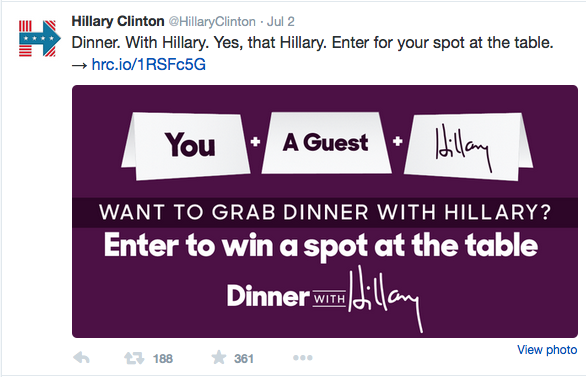
The American custom of bagging up leftovers in restaurants is still disconcerting for most restaurants in France and Germany. Smaller portion sizes in Europe are certainly part of the explanation, but equally important is the deep feeling of embarrassment associated with asking for a doggy bag.
My husband, Jean, is both very generous and quite frugal. He isn’t stingy, but he will drive the extra mile to save 20 cents a gallon for gas or shop at Aldi because he loves high quality at low prices. Of course, I didn’t know this about him when we started dating. And I’m glad that his good manners kept him from asking for a box for leftovers at the restaurants we visited while dating! But, as he grew more confident in our relationship, he decided to ask for a doggy bag in a German restaurant one day. Oh my God—I remember my reaction as if it happened yesterday. I wished I could just vanish and never visit this place again.
Jean and I were born and raised in France before relocating to Germany for work a few years after college. We met in Germany, married in Germany, and our children were born in Germany. When Jean asked for a doggy bag in this German restaurant, the waitress was perplexed by the request: “You want me to bag up the leftovers? In a bag? With or without the plating decoration?”
By now, many American readers may be wondering what’s wrong with me! Why wouldn’t you ask to take home the leftover food that you’ve already paid for?
For years, Americans have taken leftovers home.
According to the Smithsonian, “The doggie bag came about in the 1940s. With the United States engaged in World War II, food shortages were a fact of daily life on the home front—and for the sake of economy, pet owners were encouraged to feed table scraps to their pets.”
As time went by, Americans started to ask for bags to take leftover food home. Today, leftovers in American restaurants are put in foam or cardboard boxes. Personally, I’ve never heard the term “doggy bag” used in a restaurant to refer to packing up leftovers.
Of course, France and Germany suffered from food shortage during. WWII. In fact, according to author Lizzie Collingham, they suffered even more than Americans. But, neither French nor German culture adopted the practice of bagging leftovers. Most of the time, barely any food was leftover in French and German restaurants.
The cultural pitfall of doggy bags in Germany or France
For years, doggy bags have been frowned upon in France, but, since 2016 larger restaurants (i.e. serving more than 180 meals a day) are legally obliged to provide them if requested by the patrons. This French initiative sought to reduce food waste. According to a poll cited in a Telegraph article, 75% of French people are not against the idea of doggy bags. Still, 70% have never taken leftovers home.
Just like in Germany, asking for a doggy bag in France makes you appear cheap and poorly mannered. Remember my embarrassment when my husband asked for one the first time!
On top of this, in many French restaurants, a doggy bag can also be perceived as an affront to the gastronomic etiquette. In both Germany and France, children are taught to eat everything on their plate. Even now, as an adult, when I’m full, I’ll finish my plate as my parents instructed me over and over. As for our children, they won’t have any dessert if they don’t finish their entrée!
After living in the States since 2013, I’ve asked my French and German peers in a few Facebook groups how the perception of doggy bags may have changed during the last 4 years. According to my peers, the attitude has changed a little. One French member reported working as an accountant for a small group of restaurants in France, which regularly ordered boxes for leftovers. Many applauded the idea but confessed that they still don’t feel comfortable with asking for a box. In Germany, the perception has also changed somewhat, but asking to bag up leftovers is still unusual.
It’s worth noting that the portions in France are far smaller than in the US, making it easier to finish a portion. Germans order an entrée like the Americans while the French menu follows the traditional sequence of an appetizer, a main course, and a dessert. German portions are larger than French portions but not as large as they are in the US.
As a result, most French and German patrons don’t need to pack up the rest of their food.
Avoiding the cultural pitfall of doggy bags
“When in Rome, do as the Romans do,” my husband often says. Certainly a good idea, but if you are not familiar with the gastronomic culture in Rome, France, or Germany, just follow my recommendation and never ask to bag up your leftovers!
At business lunches, you want to inspire trust and confidence while giving the impression of authority. As Francesco Barbera, a lawyer in Los Angeles, said on the CBS website Chowhound, “there is something vaguely weak and humiliating about taking a little doggy bag home from a restaurant.”
Of course, doggy bags at a date are also a no-go. You won’t seduce any French person with a doggy bag, as you will just look overly frugal and ill-mannered. In an upscale or even a good restaurant, asking to wrap up leftover gives a bad impression. If you’re concerned about potentially wasting food and money, take a cue from the Germans and the French and just finish your plate!
I hope you enjoyed this post. Don’t hesitate to share your thoughts in the comment section. If you don’t have a Facebook account, please scroll down a bit farther and use the boxes below.
If you want to navigate a business lunch in France successfully, check out my post on “Why a business lunch in France is not a waste of time” here.


Thank god in 6 years the culture has apparently drastically changed. Here in France it is absolutely ok to ask for a box, especially if you have only eaten half your plate.
So for you, sharing a main course is ok but not asking for the leftovers? The latter is stingy but the former is acceptable???
You are not French or well-mannered, you’re snobish at worst and ignorant at best…
Well, it looks like I managed to feed your prejudice. Thank you for taking the time to leave a comment.
Bingo! You hit the nail on the head, Catherine! Food servings in American restaurants are TOO LARGE!
I have started ordering 2 appetizers instead of an entrée for my restaurant meal, that is, unless I can find someone at the table willing to share a large entrée with me. How do French and Germans look upon two people sharing one entrée and asking the waiter to bring an extra empty plate to the table?
I was taught to “clean my plate”, too, but that only works if I get to control how much food is put upon it.
That’s what we do Margaret. We order 4 to 5 entrées for 7 people… and ask for a box!